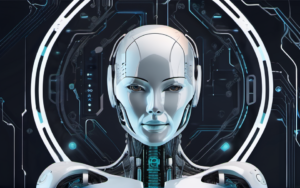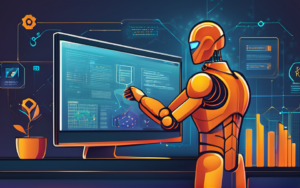The internet has revolutionized how we live, work, and communicate, but with this interconnectedness comes a growing risk of cyber attacks. These digital assaults can range from annoying spam emails to devastating data breaches that cripple entire organizations. Understanding how these attacks occur is crucial for safeguarding ourselves and our data in this increasingly digital world.
Understanding the Landscape of Cyber Attacks
The world of cybercrime has evolved significantly, becoming more sophisticated and widespread.
The Evolution of Cybercrime
Early cyber attacks were often driven by curiosity or the thrill of proving technical prowess. However, the motivations behind cybercrime have shifted, fueled by the increasing value of digital data and the anonymity offered by the internet. Cybercrime has become a highly profitable enterprise, with organized criminal groups and nation-state actors engaging in elaborate cyber campaigns.
Motivations Behind Cyber Attacks
Cyber attackers are driven by a range of motives, each posing unique threats:
Financial Gain
Financial motives are a primary driving force behind many cyber attacks. Hackers might target financial institutions, businesses, or individuals for financial gain through activities such as stealing credit card information, extorting ransoms, or engaging in online fraud.
Espionage and Data Theft
Cyber espionage is another significant motivation, with nation-states, corporations, and private actors seeking to steal sensitive information, intellectual property, or trade secrets. This stolen data can be used for competitive advantage, political leverage, or national security purposes.
Disruption and Sabotage
Some cyber attacks are designed to disrupt critical infrastructure, government services, or private businesses. This can involve denial-of-service attacks that overwhelm websites with traffic, making them inaccessible, or malicious code that damages systems and destroys data.
Political Influence
Political motivations drive cyber attacks aimed at influencing elections, spreading propaganda, or undermining adversaries. These attacks might involve hacking into voting systems, manipulating social media platforms, or launching disinformation campaigns.
Types of Cyber Attacks
Cyber attacks can manifest in various forms, each with its own tactics and consequences:
Malware Attacks
Malware encompasses a broad category of malicious software designed to compromise systems and steal data. This includes viruses, worms, Trojans, and ransomware, which can infiltrate systems through various means, including email attachments, malicious websites, or software vulnerabilities.
Phishing and Social Engineering
Phishing attacks involve tricking users into revealing sensitive information, such as passwords or credit card details, through deceptive emails, text messages, or websites. Social engineering techniques manipulate people into granting access to systems or revealing confidential information by exploiting their trust or curiosity.
Denial-of-Service Attacks
Denial-of-service (DoS) attacks aim to overwhelm a target system with excessive traffic, rendering it inaccessible to legitimate users. These attacks can disrupt websites, online services, and even critical infrastructure, impacting businesses and individuals.
Ransomware Attacks
Ransomware attacks encrypt victims’ data, making it inaccessible unless a ransom is paid. These attacks can cripple businesses and organizations, forcing them to choose between paying the ransom or losing valuable data.
Data Breaches
Data breaches involve unauthorized access to sensitive information stored on computer systems or databases. This stolen data can include personal information, financial data, intellectual property, or other confidential information.
The Mechanics of Cyber Attacks
Understanding the mechanics of cyber attacks is crucial for developing effective defenses.
Exploiting Vulnerabilities
Cyber attackers exploit vulnerabilities in software, hardware, and human behavior to gain access to systems.
Software Bugs and Security Flaws
Software bugs and security flaws are common vulnerabilities that attackers exploit. These weaknesses can allow attackers to execute malicious code, gain control of systems, or steal data. Software developers and security researchers constantly work to identify and patch these vulnerabilities, but new ones emerge regularly.
Human Error and Social Engineering
Human error is a significant factor in cyber attacks, as attackers often exploit human weaknesses through social engineering techniques. This includes convincing users to click on malicious links, open suspicious attachments, or reveal sensitive information.
Gaining Access and Control
Once a vulnerability is exploited, attackers can gain access to systems using various techniques:
Malware Infection
Malware can be used to infect systems, giving attackers remote control and allowing them to steal data, manipulate systems, or launch further attacks.
Credential Theft
Attackers can steal user credentials, such as passwords and usernames, through phishing, malware, or brute-force attacks. These stolen credentials can then be used to access accounts and systems.
Network Intrusion
Attackers can exploit network vulnerabilities to gain unauthorized access to systems and networks. This might involve exploiting weak security configurations, bypassing firewalls, or exploiting network protocols.
Data Exfiltration and Damage
After gaining access and control, attackers can exfiltrate data or cause damage:
Data Stealing and Manipulation
Attackers can steal sensitive information, such as financial data, intellectual property, or personal information. They might also manipulate data, altering records or deleting information, causing significant financial or reputational damage.
System Disruption and Data Destruction
Attackers can disrupt systems, making them unavailable to legitimate users, or destroy data, rendering it irretrievable. This can cause significant financial losses, operational disruptions, and reputational damage.
Protecting Yourself from Cyber Attacks
While cyber threats are ever-evolving, individuals and organizations can take proactive steps to protect themselves.
Strong Passwords and Multi-Factor Authentication
Strong passwords, using a combination of uppercase and lowercase letters, numbers, and symbols, are essential for protecting accounts. Multi-factor authentication (MFA), which requires an additional verification step beyond a password, significantly strengthens account security.
Regular Software Updates and Security Patches
Regularly updating software and installing security patches is crucial for fixing vulnerabilities that attackers might exploit. These updates address known security flaws and strengthen system defenses.
Antivirus and Firewall Protection
Antivirus software helps detect and remove malware, while firewalls act as a barrier between a system and the internet, blocking unauthorized access. These tools provide an essential layer of protection against cyber threats.
Educating Yourself on Cyber Threats
Staying informed about the latest cyber threats, attack methods, and security best practices is essential for recognizing and avoiding potential risks.
Data Backup and Recovery Plans
Regularly backing up data is crucial for mitigating the impact of ransomware attacks or data breaches. Having a comprehensive data recovery plan ensures that critical information can be restored even if systems are compromised.
The Future of Cyber Security
The landscape of cyber threats is continuously evolving, requiring proactive adaptation and innovation.
Emerging Threats and Technologies
New technologies, such as artificial intelligence (AI) and machine learning, are being used by both attackers and defenders. AI-powered malware can evade traditional security solutions, while AI-driven security systems can detect and prevent threats more effectively.
The Role of Artificial Intelligence and Machine Learning
AI and machine learning are playing a vital role in enhancing cybersecurity. These technologies can automate threat detection, analyze vast amounts of data to identify suspicious activity, and predict potential attacks.
Building a More Secure Digital World
Building a more secure digital world requires a collaborative effort. Individuals, organizations, and governments must work together to raise awareness, develop robust security measures, and respond effectively to cyber incidents. This includes investing in cybersecurity research, education, and training, as well as sharing information and best practices.
By understanding how cyber attacks happen, taking appropriate precautions, and staying informed about emerging threats, we can better protect ourselves and our data in the digital age. The future of cybersecurity relies on continuous vigilance, innovation, and a collective commitment to building a more secure digital world.




